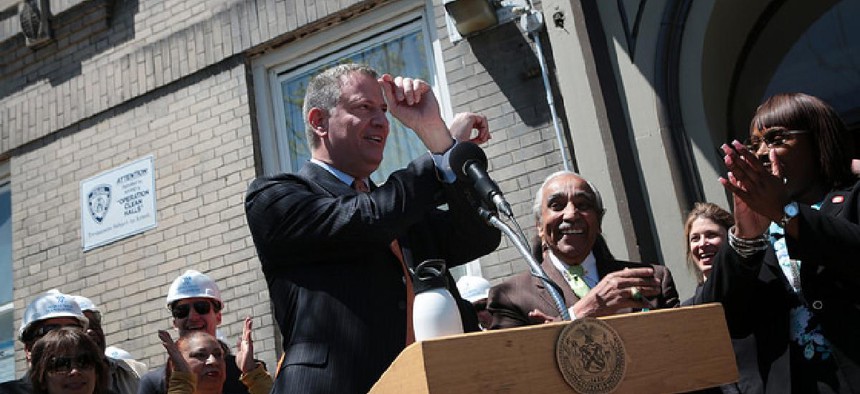The New York City Planning Commission’s approval of two controversial zoning proposals on Wednesday sends them to the City Council, which will have 50 days to take up the changes that Mayor Bill de Blasio views as integral to his affordable housing agenda but are staunchly opposed by many community boards and some borough officials.
The two measures – billed as Mandatory Inclusionary Housing and Zoning for Quality and Affordability – were both approved on 9-3 votes.
Reiterating arguments already made by the de Blasio administration, Department of City Planning Director Carl Weisbrod said Mandatory Inclusionary Housing would strengthen the city’s position in negotiations with developers by requiring buildings in up-zoned areas to permanently reserve at least a quarter of units for low- or moderate-income residents.
“This will bring new affordable housing to neighborhoods where it otherwise wouldn’t be built and act as a cushion against potential gentrification of communities caused by broad demographic trends we are seeing in so many neighborhoods, simultaneously freeing up city funds to provide even more deeply affordable housing at lower rates where economic need is great,” Weisbrod said.
Although MIH was easily approved, the appointees for the Staten Island, Queens, and Bronx borough presidents voted no. Michelle de la Uz, an appointee of then-Public Advocate Bill de Blasio, abstained, echoing concerns raised by community groups in East New York and along the Jerome Avenue corridor that upzoning those communities is unlikely to produce apartments affordable to current residents.
“Let’s not stop halfway,” de la Uz said. “It is financially feasible in a number of New York City neighborhoods to require a new MIH option that reaches deeper levels of affordability so that more families earning less than $30,000 annually can have access to permanently affordable housing.”
Weisbrod described the Zoning for Quality and Affordability as a proposal that would lift clauses that currently cut into sites’ authorized footprints, such as some parking requirements and street setbacks. He said this would remove obstacles to creating sought mixed-income housing near transit and senior facilities, ultimately cutting costs to taxpayers. The proposal also passed despite three “no” votes from the borough president nominees and with de la Uz again abstaining.
Rayann Besser, the Staten Island borough president’s appointee, noted that she had concerns about the removal of some parking requirements with the zoning changes. Alfred Cerullo III, who was named to the commission by former Mayor Michael Bloomberg, said he felt some unease about the proposal altering the character of low-density districts, but he supported other elements of the proposals and voted in favor.
Weisbrod said the de Blasio administration has committed to spending $8.2 billion on subsidized housing over 10 years, and that the two zoning changes would ensure the investment was well implemented.
“That [$8.9 billion] is double what was deployed on affordable housing in the previous decade and will produce more than quadruple the amount of housing at the very lowest incomes, but we want to make sure that our precious tax dollars are spent as wisely and efficiently as possible,” Weisbrod said ahead of the commission votes. “We also want to be sure that as opportunities for housing increase, our neighborhoods retain the economic diversity and the qualify of life that our residents demand and deserve.”
To that end, Weisbrod noted the city had beefed up anti-displacement efforts and put $1 billion in a fund for infrastructure upgrades and other investments promised to neighborhoods that are up-zoned.
A spokesman for City Councilman Donovan Richards, who chairs the Subcommittee on Zoning and Franchises, said the subcommittee does not plan to hold hearings beyond the two scheduled for Tuesday and Wednesday next week. In the wake of the Planning Commission’s 13-hour public hearing in December, Richard’s office said he is committed to staying as late as necessary to ensure all those who wish to address the committee have the opportunity to do so.


